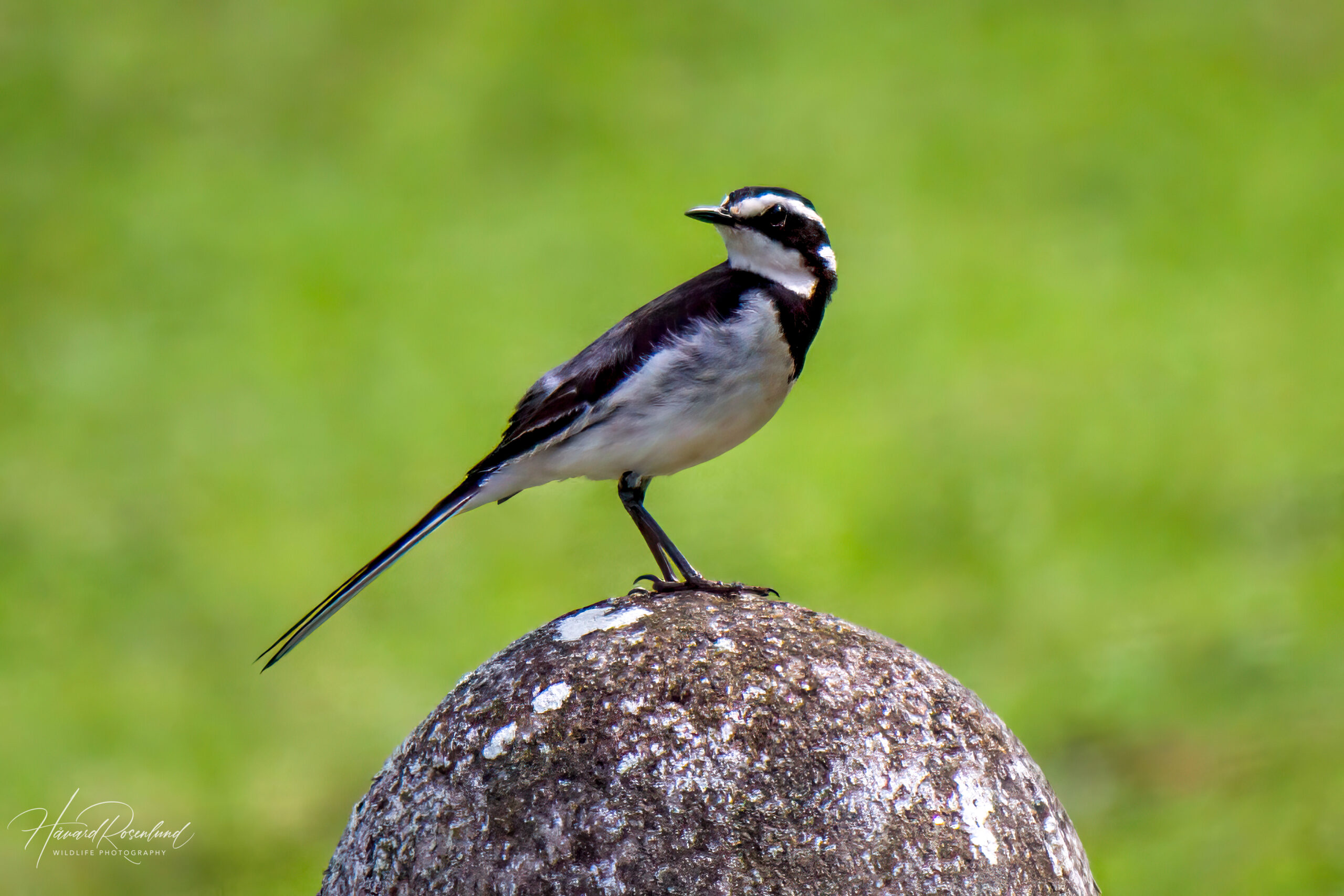Description
The African pied wagtail (Motacilla aguimp) is a species of wagtail found across sub-Saharan Africa. This bird is relatively small, measuring about 20 cm (7.9 in) in length. It has a very recognizable appearance with black upperparts and white underparts. It has a black chest band a prominent white eyebrow. The juveniles are duller with a greyish back. The tail is long and constantly wagging, a characteristic feature of wagtails. It is similar in appearance to other black and white wagtails, such as the white wagtail (Motacilla alba) found across Eurasia and northern Africa, which has a more grey back and an all-white face, and the white-browed wagtail (Motacilla maderaspatensis) in India, which has an all-back throat and cheek. The Mekong wagtail (Motacilla samveasnae) is almost identical to the African pied wagtail, but is only found in Southeast Asia.
Diet & habitat
The African pied wagtail inhabits various environments, usually close to water. It’s commonly seen in marshes, riverbanks, and lakeshores, adapting well to urban areas if water bodies are present. This wagtail’s diet primarily consists of insects, including beetles, flies, and mosquitoes, which it catches in agile flight or picks from the ground. It’s known for its unique feeding behavior, often seen running or walking on the ground with quick, sudden movements.
Nesting
Breeding season varies across regions but generally coincides with the onset of the rainy season. The African pied wagtail engages in a fascinating courtship display, involving chasing flights and vocal duets. The nest, built by both sexes, is a cup-shaped structure made of grass and lined with softer materials. It’s usually located close to water in a sheltered site like a grass tuft or bush. The female lays 2-4 eggs, and both parents share incubation duties. Incubation lasts about 14 days, and fledglings leave the nest approximately 14 days after hatching.
Status
The African pied wagtail has a wide range and a stable population. This species benefits from its adaptability to various habitats, including urban environments. However, habitat destruction and pollution in water bodies can potentially impact local populations. It is listed as least concern on the IUCN Red List.







